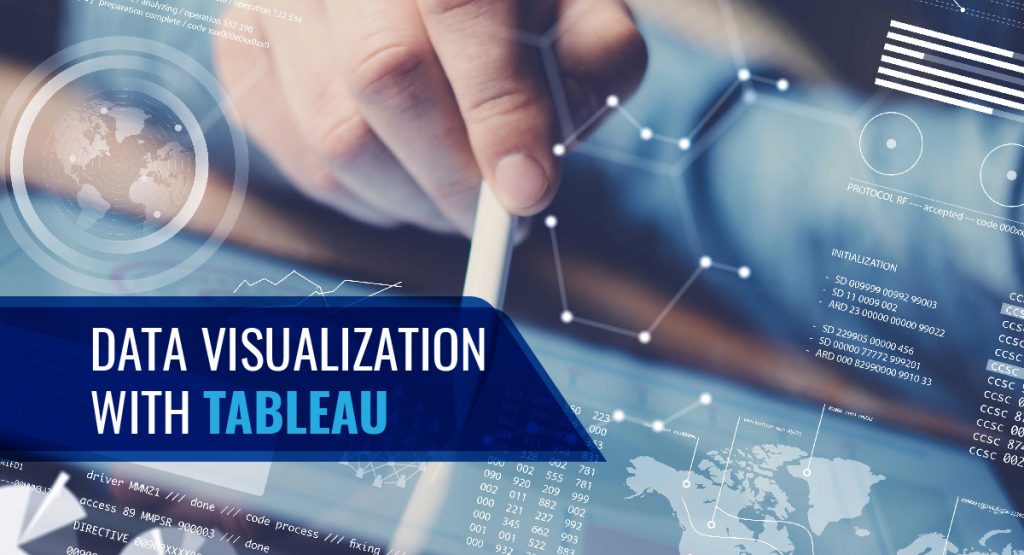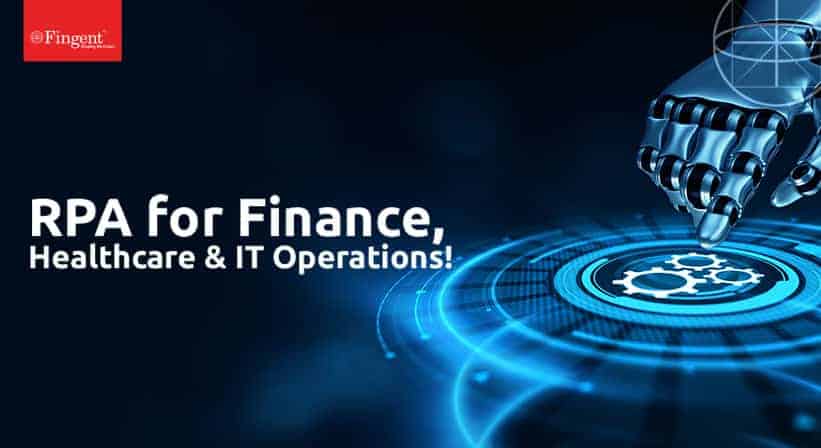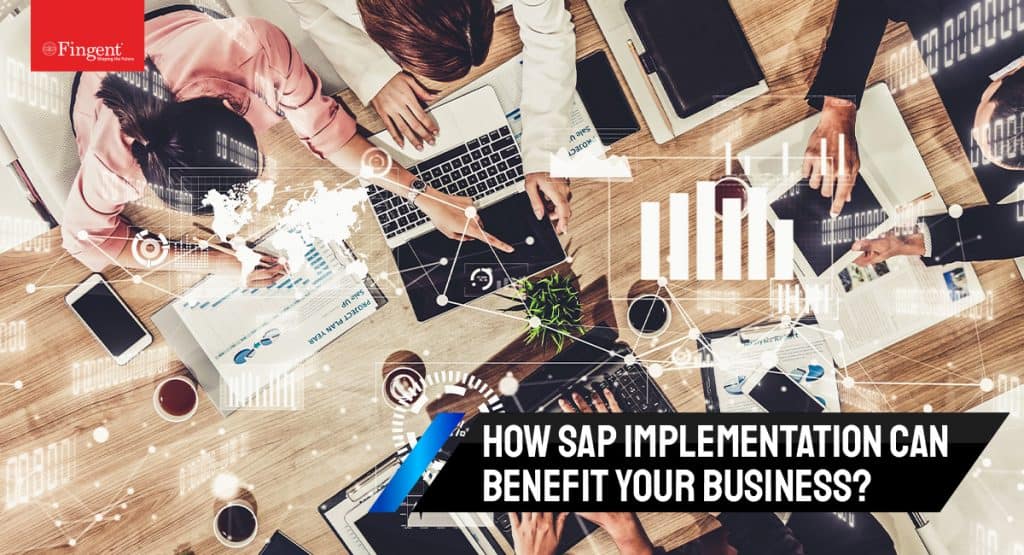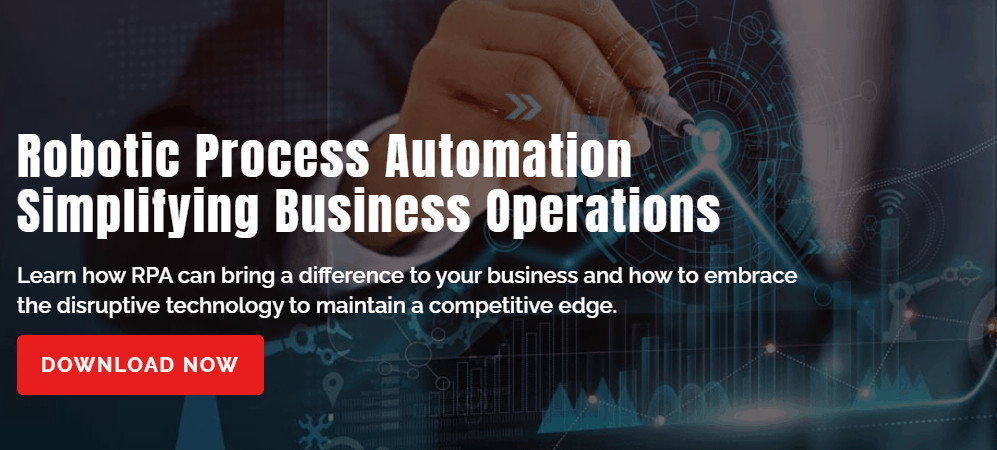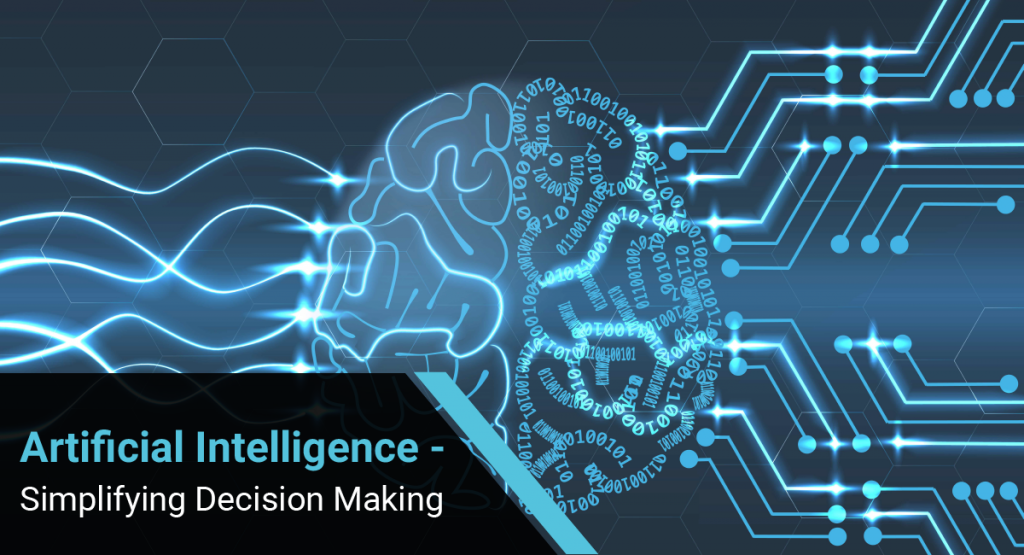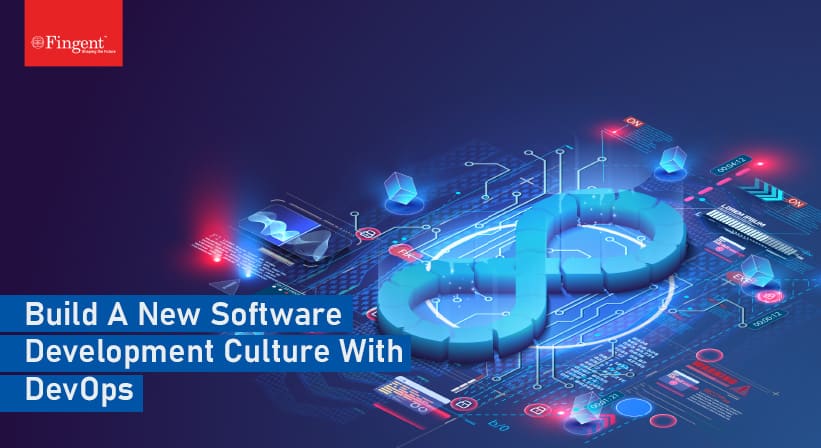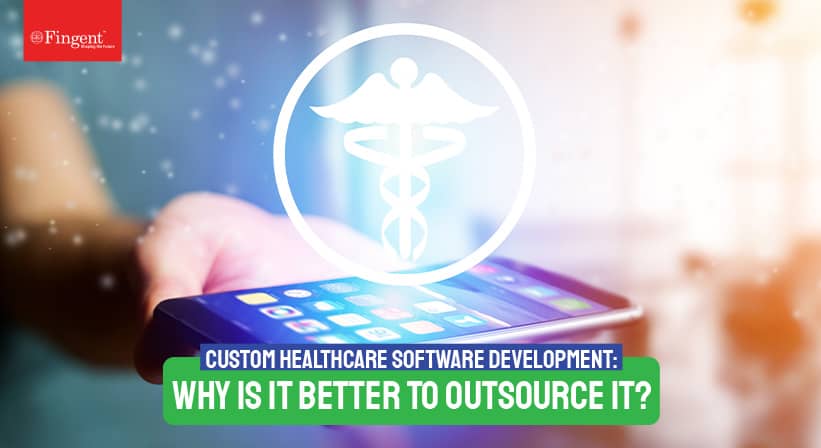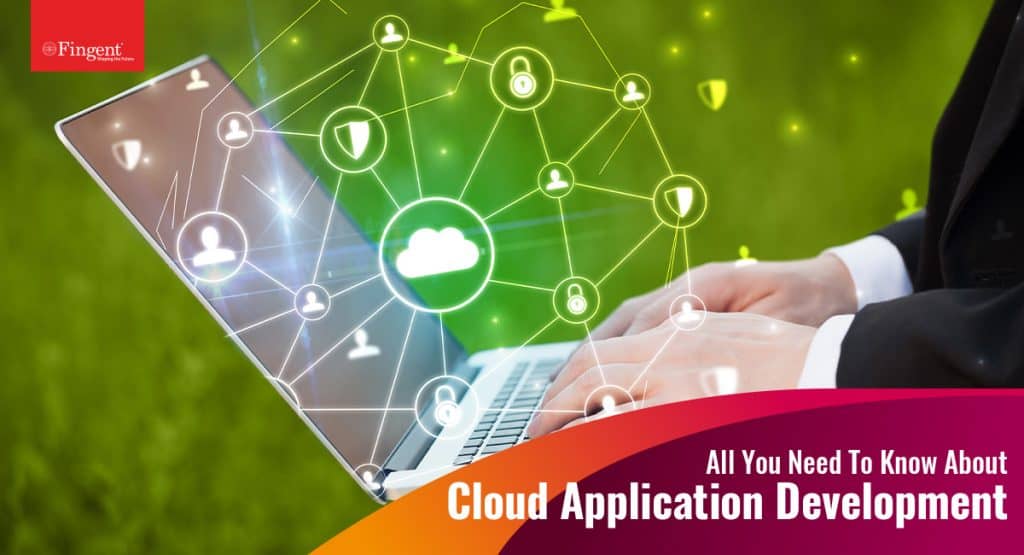Category: Business
Businesses are always on the lookout for ways to optimize processes and gain greater visualization. When processes work efficiently, the output of the product is higher. This leads to workflows that run smoothly with minimum errors and higher capacity. A good reason for the growing popularity of process automation and visualization.
Automation and visualization are the future of the business strategy. Gone are the days of carefully filling in graph paper by hand. Today, process automation and visualization help enterprises up their game by allowing access to real-time models capable of accurately capturing the nuanced data sets.
In this blog, we will expand on how enterprises can up their game with process automation and visualization.
How Enterprises Can Up Their Game with Process Automation and Visualization
Data visualization enables human operators to manage vast sets of data, glean insights from different information sources, and perform operations more intuitively and strategically.
In the current data-immersed world, data visualization can significantly add value by conveying large datasets visually. What does this mean for your business? This means a better grasp of critical customer data.
According to the IDC, the collective sum of the world’s data is predicted to grow to 175 zettabytes by 2025. Processing such large amounts of data can become a problem.
By allowing automation and the right programs to sort out your business data, you can generate graphs. You will be able to use these graphs to up your game in business competition.
Data visualization offers businesses the hope of getting a grasp on data. Fortunately, the human brain can process and recognize trends, identify potential issues, and forecast future development from clear visual displays.
Read more: How Powerful Is Data Visualization With Tableau
Look Out for Upcoming Powerful Trends in Automation and Visualization
1. AI and ML
Artificial Intelligence and Machine Learning render visualization more accurate and efficient. These technologies enable businesses to handle customer feedback without bias. Process automation allows you to sort the feedback in real-time and according to your specifications.
2. Unlock Big Data with Data Democratization
Large amounts of data are hard to understand. It requires data scientists and other experts to unlock its treasures. Not anymore. Advanced no-code data analysis platforms can automate your data process. This is called the democratization of data.
Democratization of data leaves it malleable and easy to display allowing your employees any level of tech support. When this is paired with the data visualization type, it can unlock big data results for teams at all levels of your organization.
3. Video Visualization Is Here to Stay
Young and old alike tend to retain the information they see over what they hear. This would mean that video infographics will be the future.
Video applications for business strategy and customer retention are key areas for future strategic data visualization implementation.
4. Real-time Visualization for Early detection
Knowing a problem at the exact moment it arises can assist businesses in customer retention and brand presence. Early detection can have a dramatic impact on the bottom line.
Process automation can help run a dashboard that allows users to submit their error reports to your customer support. Then the reviews can be tagged and analyzed using sentiment analysis.
5. Mobile Optimized Visualization
An increased number of people access the internet on their mobile devices. Your business needs mobile-optimized data visualization to stop customer churn.
It enables you to know if your potential customers are learning about your services through social media or an online review board. Though mobile-optimized visualization is an easy step, it is critical to keep your business on top of the game.
Read more: 7 Awesome Data Visualization Tools
Business Applications of Process Automation and Data Visualization
1. Financial Service and Insurance
The finance service industry is a prime candidate for process automation and data visualization. Two top requirements of this industry are customer response time and compliance with strict regulations.
When automated, quick decisions can be made based on pre-defined rules like loan applications, claims processes. businesses can use data visualization to make reliable predictions or risk calculations in the financial industry.
Insurance fraud can cost billions of dollars damage. Process automation and data visualization can improve fraud detection.
Read more: Deploying RPA for Finance, Healthcare, and IT Operations.
2. Distribution and Logistics
Process automation and data visualization can minimize costs by planning transport promptly, reducing costs of downtimes and maintenance.
3. Sales
Data visualization can greatly improve relationships with your customers. It helps you know the needs of your customers better, and address each of them directly in real-time.
4. Marketing
Data visualization and process automation can reduce marketing costs substantially. These technologies can help evaluate the demographics, location, transactions, and interests of your customers. Visualizing these details can help you understand their purchase patterns.
Thus, data visualization can be used to create and target new customer segments. Cross-selling is another advantage. At the same time, data visualization may reveal that customers are dissatisfied. Identifying this and responding quickly can counteract the situation to retain your customer base.
5. Healthcare
Process automation and data visualization enable cheaper healthcare. It can help predict disease occurrence and proactively propose countermeasures.
6. Science and research
Visualization enables the evaluation of the data of an experiment. Process automation and visualization can be advantageous especially when an experiment generates large amounts of data within seconds.
7. Production
Large amounts of data are generated during production. Using process automation and visualization can help plan preventive maintenance and prevent production delays or downtimes.
Prepare Your Business For The Future With Fingent
Fingent helps enterprises automate document-based processes. We can help you create safer sharing and collaboration. Our platform allows you to create teams, assign roles and privileges, and streamline communication.
Fingent’s partner integrations allow you to use it together with your existing software. Our top-level measures protect our users’ data. The encryption we provide ensures content integrity and prevents alteration.
Fingent top custom software development company can help your organization reach the goal of paperwork elimination. Doing so can lead to efficient resource distribution throughout the organization.
What’s more, it reduces carbon footprint. Our experts bring along specializations supported by scientific rigor and in-depth knowledge of advanced techniques to design, develop, and deploy solutions for process automation and visualization.
Give us a call today and let’s get talking.
Stay up to date on what's new

Featured Blogs
Stay up to date on
what's new



Talk To Our Experts
Despite the rampant economic implications of the COVID-19 pandemic, numerous small and mid-market businesses (SMBs) managed to survive the odds by embracing modern technology. With a cloud-first approach and a partnership-driven ecosystem, several SMBs demonstrated tremendous growth in these extraordinarily challenging times. Americas’ SAP User Group (ASUG) survey observes that most of their mid-market customers expect to grow at a rate of 56% over the next five years. If you’re an ambitious mid-sized business with a large-scale growth plan, it’s time to outgrow your accounting software and adopt a modern ERP platform.
Read more: How Organizations Can Gain a Competitive Edge by Implementing Digital Core ERP
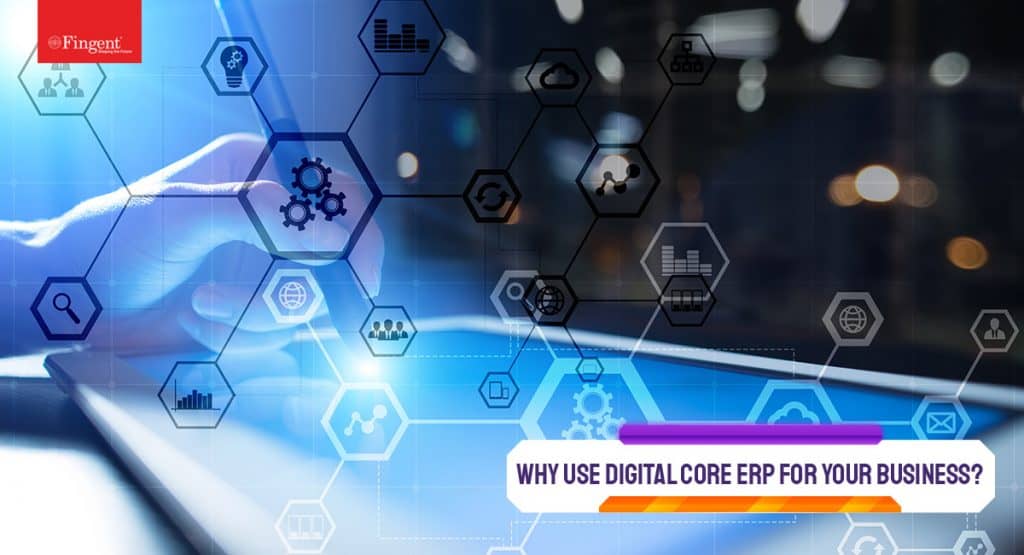
Many small businesses hesitate to invest in intelligent ERPs due to high costs and technical complexities. Platforms like SAP Business ByDesign allow SMBs to oversee their whole business, improve compliance, increase cash flow, and expedite reporting. SAP Business ByDesign is a sophisticated cloud ERP software designed specifically for mid-market users. How does ByD enable your business to build a robust technology foundation and drive growth? Let’s explore this in this blog.
What is SAP Business ByDesign?
SAP Business ByDesign (ByD) is an integrated, on-demand, full-featured, cloud ERP solution that can run your entire business operations on a single platform. ByD is sold and operated as software as a service (SaaS) and is designed specifically for small to mid-sized enterprises as well as subsidiaries of large corporations. SAP Business ByDesign can integrate and manage all your core business processes such as financials, project management, human resources, procurement, customer service, sales, integrated business analytics, and supply chain, among others.
SAP Business ByDesign is built on the standards of service-oriented architecture (SOA). The platform attains integration between business capabilities via message exchanges. Multi-tenancy enabled SAP NetWeaver is the underlying technology stack of ByD. The platform leverages HANA, SAP’s in-memory database.
Read more: SAP HANA – The Game-Changing Technology
SAP ByD Unifies Core Business Functions
SAP Business ByDesign works as an end-to-end business suite that unifies the following core business functions:
1. Financial Management
ByD helps assess your company’s financial position in real-time. You can use the software to administer financial and managerial accounting for multiple operating units, currencies, and reporting paradigms. Using ByD, you can analyze your organization’s customer and supplier transaction data to better understand your cash position.
2. Customer Relationship Management
SAP Business ByDesign allows your business to efficiently manage your sales, marketing, and service processes. Personalized customer data enables marketers to run successful campaigns, improve lead generation and qualification, and expedite handover to sales. The software improves your account management by automating key sales functions, from contact interactions to billing. ByD equips your employees with the right tools and insights to deliver exceptional customer service.
3. Human Resources Management
SAP Business ByDesign simplifies employee onboarding processes. Employees and managers can use the software to access all the relevant information. ByD streamlines time, attendance, labor, and compensation management by centralizing data and self-service processes. Employees can self-manage their timesheets, personal data, and procurement processes. The software lets your payroll integrate with third-party payroll providers for faster processing. ByD also helps automate policy-compliant requests and approvals.
Read more: Choosing Between SAP Business One and SAP Business ByDesign
4. Project Management
SAP Business ByDesign helps manage projects of all sizes and complexities through real-time project collaboration and monitoring. If you’re using Microsoft Teams, you can directly access your ByD application from Teams.
5. Procurement
ByD helps maintain a centralized database to store supplier and product data. You can seamlessly manage multiple vendor contracts and negotiate better prices with real-time information. This saves your cost and time.
6. Supply Chain Management
SAP Business ByDesign streamlines customer and supplier collaboration with improved supply-demand matching. This ensures that the product design meets customer expectations and shortens the time to market. The software helps control your material flows and automates relevant processes across manufacturing, warehousing, and logistics operations. All these lead to better procurement planning.
Business Benefits of SAP Business ByDesign
Digital transformation is the prerequisite for an intelligent enterprise. With its ease of use, insightfulness, and openness, SAP Business ByDesign enables SMBs to drive digital transformation efforts successfully.
Read more: RISE with SAP – How Fingent Can Help Explore Business Transformation as a Service (BTaaS)
Here’s how your business can benefit from SAP ByD:
- Offers built-in analytics to leverage real-time data across all operational areas. This supports intelligent decision-making.
- Anytime, anywhere access via web and mobile helps build an empowered, mobile-connected workforce.
- Scalable technology and quarterly upgrades ensure that your ByD platform is always up-to-date.
- Though designed for small and mid-sized companies, the platform comprises all the features and capabilities utilized by large enterprises.
- A highly configurable business management solution that requires minimal customization.
- One of the most cost-effective ERP solutions that reduces your operational expenses.
- Gain 360-degree visibility of your business, with instant access to reports on enterprise-wide operations.
Case Study: Fingent helped a real estate giant reduce manual work, improve TAT, and increase profitability by integrating multiple role-based mobile apps into their SAP ERP system. Download now!
SAP Business ByDesign Mobile Strategy Updates for 2022
The new SAP Business ByDesign mobile strategy 2022 aims to help customers access more preferred features on their smartphones without any complexity. Currently, SAP Business ByDesign supports five mobile apps – SAP Business ByDesign Mobile, SAP Manager Approvals, SAP Time Recording, SAP Project to Go, and SAP Project Cockpit. SAP will now focus on improving the SAP Business ByDesign Mobile App that integrates all these features onto a single platform. Following are the changes to note:
- Starting from August 2022, customers will be able to access all the ByD features using a single app, that is, SAP Business ByDesign Mobile App. No app swapping will be required anymore.
- From 1st May 2022, users will not be able to download and install SAP Project to Go and SAP Project Cockpit apps from the app stores.
- From 1st August 2022, users will not be able to download and install SAP Manager Approvals and SAP Time Recording from the app stores.
- By removing existing installations from your devices and switching to the Business ByDesign mobile app, you can access all these features using a single app. It accelerates your time-to-market and helps you benefit from streamlined business processes.
Experience Seamless Business Transformation with Our SAP Services
As more businesses switch to remote operations, there is an increasing dependency on mobile devices to ensure business continuity. It’s important for small and mid-sized businesses to focus on building a future-driven business model powered by cloud and connected technology. SAP Business ByDesign enables you to accomplish these goals easily. In SAP’s own words, “Business ByDesign connects every function across your company with proven best practices and in-depth analytics.”
Read more: How SAP ERP Software Implementation Benefits Your Business
Fingent top software development company has the expertise to customize and implement SAP Business ByDesign for all sizes of businesses, across verticals such as professional services, manufacturing, real estate, retail, logistics, and so on. Our cloud ERP implementation services help transform your organization into an intelligent enterprise. We are a Silver Partner of SAP with 18+ years of experience in implementing SAP services and solutions. Our goal is to help you adopt the right technology that solves your business challenges without any complications. Contact us to understand how your business can benefit from SAP Business ByDesign.
Stay up to date on what's new

Featured Blogs
Stay up to date on
what's new



Talk To Our Experts
The property sector in the United States came to a crashing halt in March 2020, when the first wave of COVID-19 hit the nation. Mortgage rates dropped by 34%, affecting home buying and selling plans. Retail vacancy rates spiked up to 20% and commercial property loan delinquency rates soared up to 11.49% in Q2 of 2020. Months of shutdowns, social distancing regulations, traveling curbs, stay-at-home mandates, remote working, online shopping, and home delivery led to a drastic decline in occupancy rates and rents. People shifted their working spaces from office to home which slashed the demand for commercial rental spaces. The liberty to “work from anywhere” triggered a mass exodus from expensive urban areas to affordable suburbs and rural areas, lowering home value growth in metros.
All these challenges forced the property sector into urgent changes. Along with reconciling fiscal and monetary policies, real estate leaders must capitalize on property management technologies – specifically automation – to recover and rake in profits. Bitwise Industries observes that “the immediate need for innovation and automation is now a necessity to not only survive but to truly thrive in the real estate industry.”
Read more: What’s in Store for Real Estate This 2024
How does automation help a highly fragmented industry like real estate to manage multiple operations in one place and sync a horde of activities?
Automation in Real Estate: Fostering “All in One Place – All in Sync”
McKinsey’s survey identifies that automation and remodeling of work processes enable businesses to control costs and mitigate uncertainty during recessions. A real estate firm needs to efficiently coordinate multiple business functions such as managing buyers, sellers, and properties, contracting and leasing functions, property listing and tracking, finance and accounting, and so on. Automation helps sync and manage all these activities in one place. Here’re the top five real estate processes that can benefit from automation:
1. Optimize internal workflows
Automating internal workflows improves your team’s productivity. Having a well-synced project management system with up-to-date dashboards, real-time analytics, and reports, automated document flow, task reminders, deadline notifications, meeting schedulers, etc. can save your workforce’s time and improve their focus on value-adding functions.
2. Enhancing customer journey
Custom real estate software and integrated PropTech solutions allow customers to create, view and modify personalized wish lists, look up and find property information, and filter details based on different criteria. Realtors can leverage Virtual Reality techniques to improve customer experience by offering virtual tours, 360-degree property views, and 3D site plans. Integrating mortgage calculators, neighborhood descriptions, and an easy ordering process enables customers to buy, sell, or rent properties easily.
Read more: How Virtual Reality Can Transform Real Estate Operations
3. Improve sales and marketing processes
Real estate marketers and salespersons can leverage automation to sync all their leads in one place, access lead information anytime on their phone, create custom client lists, save time with lead routing, automate drip email campaigns, set up activity-based email workflows, keep track of previous interactions, and send out reminders and updates to clients on time. All these lead to higher conversion rates.
4. Manage invoices and finances
Manual invoicing and payment processes consume your team’s valuable time and affect your organization’s scalability. Automated, all-in-one property management software allows you to centralize, oversee, and streamline the payment process without any paperwork. Automating financial management improves your processes with customers, partners, and suppliers. You can easily track orders, gain approvals, send notifications, and obtain real-time visibility into each transaction using the real estate management software.
5. Carryout field and property inspections
Leading property inspection software offers customizable templates and checklists for property managers, field inspectors, site auditors, and clients to schedule inspections, record on-site data, and auto-generate reports. Automating the whole inspection process reduces both manual errors and report submission time. This helps find out the quality and condition of a property (home), secure governmental approvals quickly, and fix the best price for the listed property.
Benefits of Real Estate Automation: A Quick Recap
- Streamline workflows and back-office tasks
- Reduce tedious paper works and manual jobs
- Improve focus on value-adding functions
- Monitor property managers and personnel dispersed across various locations
- Implement innovative ways to showcase and market properties
- Process invoices and payments on time
- Improve customer service and attract more buyers
- Eliminate supplier management hurdles
How Fingent Enables Real Estate Companies to Leverage Automation and Digital Technologies
We help real estate companies and property managers to prepare for a digital, data-driven, and sustainable future. Our projects demonstrate the value we deliver to the real estate industry.
#1. Rentmoji, The All-in-one Property Management Platform
Inefficient communication systems, disconnected business segments, and poor customer experience failed to deliver the expected ROI to our customers. They needed a single platform that centralizes all the aspects of the property management life cycle. This resulted in the development of Rentmoji, an all-in-one property management suite that helps streamline and manage diverse operations in the industry.
Analyzing the challenges faced by different stakeholders in the real estate business, we automated key processes and implemented top-notch security solutions. Rentmoji now serves as a robust single-source property management solution for residential rental properties (Single-Family Rentals and Multi-Family Rentals), CAM, and HOA management.
- The company grew from 2 to 160 employees within two years of implementing the software
- Customized portals and integrations for tenants, owners, and vendors
- Structured lead management process and extensive syndication
- Enhanced speed-to-market with cloud capabilities and automation
#2. End-to-end CRE Transaction Platform
An investment brokerage firm in the United States was struggling to adapt to the changing Commercial Real Estate (CRE) market demands. They required an integrated solution that will offer them real-time visibility into the performance of property listings and visualize data insights for brokers and investors to make better decisions. To help them realize the benefits of data-backed decision-making, we created a modern net lease trading platform. It improved their CRE transactions and sales. The customer can now manage 10,000+ listings via the trading platform and track 1031 exchanges effectively. They also have access to reliable ROI metrics based on current and future trends.
- Predictive analytics matches properties to investors’ preferences and expectations
- Projected revenue charts and financial summaries help business analysts
- Place and manage offers on multiple listings and update them on the fly
- Brokers can use the application to easily demonstrate listings to prospective buyers
Fingent has also helped develop custom real estate software and PropTech solutions for leading real estate brands like SimpleRent, Easa Saleh Al Gurg Group LLC, and WRI Property Management.
Leveraging the Latest in PropTech to Navigate the New Normal
The global pandemic emphasized the need for all aspects of real estate to embrace technology. Buying software to merely run your operations remotely isn’t enough. Technology capabilities should allow you to generate value and respond swiftly in a pandemic-afflicted economy. 58% of real estate organizations struggle to integrate their legacy applications with innovative tech solutions. It exposes these businesses to major financial and operational impediments. Fingent custom software development experts aims to help such businesses by bridging their technology talent gaps and developing all-in-one, integrated, custom PropTech solutions.
Stay up to date on what's new

Featured Blogs
Stay up to date on
what's new



Talk To Our Experts
Robotic Process Automation (RPA) is not just a “nice-to-have” option anymore. If you want to remain competitive it is an absolute necessity.
As a most promising technology enabler, RPA helps improve speed, quality, and productivity. RPA strengthens the organization, ensuring that it is ready to deal with disruption and change. This blog will discuss how it is making a mark in Finance, Healthcare & IT operations.
What Is RPA?
Robotic Process Automation (RPA) is an end-to-end approach that can automate workflows without the intervention of a human being. This approach allows users to configure software that enforces business processes. RPA software can collect, interpret and orchestrate applications to perform various repetitive tasks.
RPA is a technological breakthrough for industries like finance, healthcare, IT, telecommunications, banking, insurance, retail, property management, and many more. Industries that implement RPA can automate their workflows, infrastructure, and other labor-intensive and time-consuming processes.
RPA is both cost-effective and user-friendly. It is no surprise, industries are racing to unlock value from RPA, including digital labor.
Watch now: How Robotic Process Automation Is Building Better Workplaces
How Is RPA Revolutionizing Industries?
- Increased Accuracy: Bots are less prone to make mistakes or typos than human workers.
- No interruption of workflow: Virtual robots can operate 24/7 without staff initiation.
- Meet strict compliance standards: Configured bots can provide an audit trail for each step and retrace the steps, in case of a process review.
- Work with existing systems: Robots do not need extensive IT resources; they work with the layers of existing applications.
- Improve employee morale and experience: Bots offload manual tasks from employees and enable them to focus on strategic, revenue-producing activities.
These advantages sound good. But, how does this ‘digital worker’ (RPA) streamline business processes? Let’s see.
How Can RPA Streamline Processes?
1. Employee Onboarding
Employee onboarding is a costly and time-consuming process. Zippia’s research showed that the average cost per hire is $4,425, or 40% of an employee’s base salary. Not just that, it takes about 36 to 42 days to complete the onboarding process.
Fortunately, RPA can reduce both the cost and the time taken to onboard an employee. How can it do that? It can do it by automating all repetitive and rule-based tasks.
For example, a bot can accurately source an applicant 24/7, and without any bias. After which, it can assist in screening resumes and candidates. Further, a bot can handle much of the paperwork that the company needs to fill out.
2. Auditing
Although audit practice has improved over the last 30 years, a massive amount of manual, repetitive, and rule-based tasks still take up much of the auditor’s time.
Examples of these tasks include file organization, the performance of basic audit tests in excel, manual annotations, and many more. These tasks are not only labor-intensive, but they are also prone to error.
RPA offers the ability to connect otherwise unintegrated audit activities. In addition to the obvious time-saving benefits of RPA, there are financial advantages. For instance, PwC estimates that 45% of repetitive work can be automated, and this would save $2 trillion in global workforce costs.
Beyond simple cost savings, automation can enhance an auditor’s ability to do his job. By freeing up an auditor from mundane, repetitive tasks, RPA allows them to focus on the more complex aspects of their job.
By sifting data more accurately than human auditors, RPA can help human auditors to scrutinize whether an accounting treatment or client behavior is reasonable. With such improved efficiency, auditors can make a final determination about optimizing costs.
3. Invoicing
Invoice processing is a crucial business operation. Yet, these tasks are labor-intensive, error-prone, and do not directly generate revenue. RPA is designed to manage such tasks effortlessly and efficiently.
For instance, when invoices come through various channels, they have to be matched to purchase orders, and then most often, they need to be approved by different people for payment.
RPA allows you to automate the purchase order matching process to flag any errors for further scrutiny before submitting the payment. You and also create rules to send invoices to the right people for approval automatically. RPA can automate all the data entry and manual processing involved in accounting and finance.
These are just a few examples that show how RPA can drive faster response and improve business processes.
Now that we understand how RPA streamlines processes, which of the top industries benefit from adopting RPA?
Read Whitepaper: Learn how RPA can bring a difference to your business and give you a competitive edge!
Top Industries That Can Benefit
Some industries that think automation is a costly effort have witnessed early adopters of RPA outperform the rest of the businesses with an increased ROI. According to Gartner, the RPA market is expected to grow at double-digit rates through 2024.
1. Robotic Process Automation in Finance Sector
Finance sector applications include managing customer accounts, migrating data between accounts, updating loan and mortgage data, and more. Just by defining the rules, Robotic Process Automation can help financial services to meet compliance standards.
RPA technology is accurate. Hence, it significantly reduces risk in the finance sector. Faster RPA cycles are highly scalable and rapidly deployable.
2. Robotic Process Automation in Healthcare
The pandemic has increased the volume of patients substantially, and healthcare industries are prioritizing efficiency and cost reduction. These two are major benefits of RPA implementation in the healthcare sector.
- Improved quality: RPA implementation automated and simplified entry process, claim process, maintenance of medical records. This enabled healthcare personnel to tackle the large volume of patients, especially those who need individual care and attention.
- More human workforce to care for more patients: RPA implementation replaced the workforce that performs mundane repetitive tasks. Healthcare professionals now have more time to spend on core activities rather than perform mundane tasks.
3. Robotic Process Automation in IT
Today, business operations depend on how well the IT system is managed. Leveraging RPA in IT operations is worthwhile. Consider why:
- Helps manage high volumes of data: Managing high volumes of data from different locations and different departments can be challenging. In contrast, RPA can process large datasets with greater agility, and complete the process faster and with no errors. Moreover, Robotic Process Automation systems can also update changes in the data in real-time.
- Enhances customer experience: Employees are required to respond to any inquiry adequately and on time. Anything less could push your customers to your competitors. Automating repetitive tasks frees up agents to focus on more customer-related tasks such as pitching in a sale or providing end-to-end product engineering solutions.
- Better patch management: Manually patching IT systems is always a bad idea because it leaves more room for errors and is time-intensive. Implementing RPA can help synchronize the vulnerability database, scan machines for missing patches, and deploy the missing patches. This way automation ensures that the system is always protected.
Read more: Drive business growth with RPA!
How Fingent Can Help Deploy RPA Seamlessly
Successful implementation of Robotic Process Automation depends on a clear understanding of the task at hand. At Fingent we can make the implementation a lot easier. We can help you automate parts of your process or the entire thing.
With automation under one wing and cognitive technologies under the other, Fingent software development experts ensures you are in complete control. We can help you discover new, effective automation ideas. As a professional partner, we help you identify your strengths and areas of improvement and then work with you to build an action plan with tactical and strategic solutions.
Fingent also provides both onsite and offsite training and maintenance to ensure you get maximum ROI. Give us a call and let us help you get this rolling.
Stay up to date on what's new

Featured Blogs
Stay up to date on
what's new



Talk To Our Experts
Technology trust is a good thing. Traditional approaches focused on establishing a strong perimeter to keep the bad guys out are no longer enough. In today’s digital world, Zero Trust Security is an approach that is essential for every business that has an online presence. Zero trust is a holistic and strategic approach to security that verifies every person and device that is granted access and confirms who and what they say they are. This blog explains why there is an increasing need for app security and 7 reasons why businesses need the Zero Trust Security paradigm.
Is There an Increased Need for App Security?
Cloud environments host business-critical applications and data, making them vulnerable to attack by hackers who would like to steal, destroy, or hold hostage sensitive data for personal gain. Though the security strategy is not perfect, Zero Trust reduces the attack surface and limits the impact and severity of the attack.
Functionalities in an application increase its vulnerability to an attack and the frequency of the attacks also increases. Identifying vulnerabilities and security threats early on can save a lot of time and money for businesses. App security lowers the number of vulnerabilities, increases efficiency, and improves the speed of detection and time-to-fix.
Watch now: How InfinCE – an infinite cloud platform, is empowering industries with secured next-gen cloud technology!
7 Reasons Why Businesses Need Zero Trust Security
Zero Trust limits the scope of damage if credentials are compromised, or if the firewall is breached. This paradigm secures remote work better than conventional methods. It improves productivity and organizational agility. Here are additional reasons to consider:
1. Increased Cyberattacks
When organizations rely on a single sign-on (SS)) verification method, ensuring people are who they say are may become difficult and risky. To avoid this security gap, SSO should be balanced with other technologies like Multi-factor Authentication (MFA).
In the last few years, MFA has become easier and smarter. While SSO and MFA together create a tight web of security around an organization, they fail to provide a smooth end-user experience.
That is where Zero Trust Security comes in. Zero Trust is based on the assumption that “nothing” and “nobody” are to be trusted. Using AI and ML in Zero Trust models, organizations can start to learn the normal behavior of their employees. These enable organizations to detect any deviation from their regular pattern and block an employee’s access until he is being verified.
2. Cybersecurity Workforce Outpace Supply
The success of Zero Trust depends on continual monitoring and analytics. When you use automation to evaluate access requests you can judge those requests based on the key identifiers and then automatically grant access. The IT department need not be involved in approving each access request, but look into it only when the automated system flags requests as suspicious.
How can this be of significant benefit? According to Cybersecurity Workforce Study, 2021, 60% of the participants reported that the shortage of cybersecurity staffing is placing their organization at risk. Despite the influx of 70,000 professionals into the cybersecurity workforce, global demand for cybersecurity professionals continues to outpace supply. So, if you can safely automate, you can reduce human resources, and your existing team can devote their time to innovation and improvement.
3. Heightened Security Measure Require More Security Teams
The Zero Trust optimizes your existing security team because it uses a centralized monitoring system. With it, your team can easily generate reliable data and gain insights. As a result, you can maintain a more secure environment even with reduced security staff.
4. Cloud Environment Require Shared Cybersecurity Responsibility
Businesses are moving their critical applications and workloads to the public or hybrid cloud. Given that, cybersecurity leaders must reconsider the security measures they have in place. The cloud environment requires a shared responsibility model. In the Zero Trust model, certain security aspects are provided by the cloud vendor, and others are cared for by the enterprise.
Read more: Why Is Cloud Security Important What Are The Best Practices to Ensure Cloud Security

5. Network Is No Longer a Secured Enterprise Network
Work From Home has necessitated intense use of the cloud. This means the internet network is no more secure. The conventional security measures and visibility solutions are no longer practical or robust enough. Zero Trust rests on the foundation of the “always-verify” principle. It offers complete visibility both in data centers and the cloud.
6. Everyone Need Not Have Elevated Security Privileges
In this digital-first age, users who access an enterprises’ applications and infrastructure are not just employees or customers. Vendors who are servicing a system, suppliers, or partners could also be accessing privileged data.
None of these non-employees need such access. What more, not all employees need access to every application, infrastructure, or business data. A well-executed Zero Trust strategy enables businesses to precisely control access based on key dimensions of trust.
7. Work From Home Increases Security Risks
In the post-pandemic era, Work From Home (WFH) has become the new normal. Location-based security technologies like the company’s headquarters are no longer relevant. Unsecured wi-fi networks and devices increase security risks. Assuming that their employee’s WFH setups and environments are not as secure as the office, businesses must depend on the overreaching system like a Zero Trust framework.
Work devices are traditionally managed, patched, and kept up-to-date with security tools and policies, not so with BYOD (Bring Your Own Devices). Some employees may forget basic cyber hygiene skills. The Zero Trust Security can control the potential for a security breach as it enforces access controls at every point within the network.
Watch now: Shifting to a remote work environment? Learn why InfinCE makes the best remote work companion!
Adopt Zero Trust Security
Zero Trust Security paradigm ensures each request undergoes evaluation based on micro-segmentation of user types, location, and other identifying parameters. Only after such intense scrutiny does it determine when to trust, what to grant access to, and how long that access should be enabled.
Zero Trust Security returns immediate gains through risk reduction and security control. But there is more. It improves visibility, increases productivity, makes better use of your IT resources, and facilities compliance. In a nutshell, Zero Trust Security helps your organization build strength and resilience.
Decision-makers and security leaders of an enterprise should consider leveraging robust layers of defense through the Zero Trust model. Zero Trust Security tightens controls over access to information through network perimeters and the implementation of strict authentication measures.
Security experts at Fingent are working with the Zero Trust model and have honed their skills in providing bulletproof security for our clients’ systems and networks. Give us a call and see how we can help you.
Stay up to date on what's new

Featured Blogs
Stay up to date on
what's new



Talk To Our Experts
“The human language, as precise as it is with its thousands of words, can still be so wonderfully vague.” – Garth Stein, American author.
Human language is unique and complex. Encoding human language is considered a difficult task. For starters, you can arrange words in infinite ways to form a sentence. Also, each word can have several meanings. Training machines to communicate as humans do is a gigantic task. In recent years, Natural Language Processing (NLP) enabled computers to understand human language and respond sensibly. It is the intersection of computer science, linguistics, and machine learning.
NLP is the driving force behind technologies, like virtual assistants, speech recognition, machine translation, and much more. This blog discusses the importance and top benefits of NLP. It will also explain how businesses can foster the power of NLP.
Importance of NLP
Machine translation is the most widely used NLP application. NLP methods enable the machines to understand the significance of sentences, thus improving the effectiveness of machine translation.
NLP is important for businesses as it can detect and process massive volumes of data across the digital world, including social media platforms, online reviews, and others. Also, NLP technology is able to offer businesses valuable insights into brand performance. It can also detect any persisting issues and take necessary risk mitigation measures to improve performance.
NLP can achieve all of this by training machines to understand human language faster, more accurately, and in a reliable way. Because NLP can monitor and process data consistently, brands can remain updated with their online presence.
NLP is a valuable asset for sentiment analysis as it helps businesses recognize the sentiment of their customers from different online posts and comments.
Top Benefits of NLP and How Businesses Can Foster the Power Of NLP
1. 24/7 Go-To Customer Support
AI-based chatbots use NLP to help customers get immediate answers to any query 24/7. What if the queries focus on the same themes? Chatbots can play the role of a customer service executive by using predefined answers. They can even provide specific support like booking a service or finding a product. Thanks to NLP techniques that analyze specific words, chatbots can now detect a user’s intention.
We live in an era where a person looks for an immediate answer to his question. If not, he switches to a competitor. Chatbots are the perfect solution! They can even convert prospects into a customer by providing ultra-attentive service.
Read more: 5 Leading NLP Platforms that Support Chatbot Development
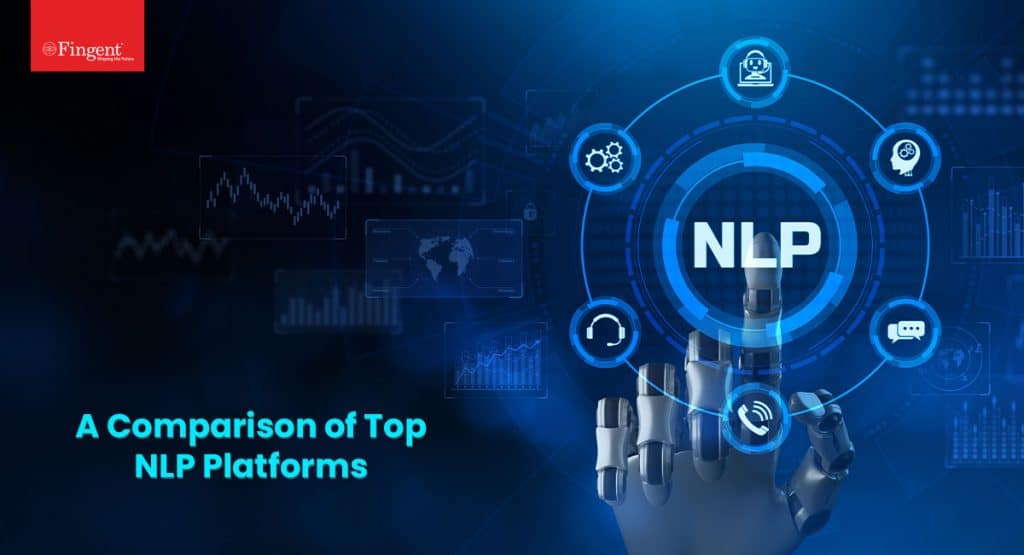
2. Save Resources
A business is successful when it begins making a profit. It was predicted that NLP-powered chatbots will save businesses over $8 billion per year. It can free up employee time, allowing them to focus on the creative tasks that engage customers and boost your bottom line. What’s more, NLP-based software can be improved automatically, often without investment.
3. Moderate Content on Websites
Businesses can use NLP technology to enforce spam filters and block unwanted content on websites and in email. It enables you to maintain your forum’s quality while avoiding unsolicited advertising, controversies, or backlinks to malicious sites.
Furthermore, the NLP model can even detect hate speech. How is that possible? Advanced NLP models can learn to read the context of a sentence and classify it into the appropriate group. By using the appropriate token, the NLP model can read a user’s emotions. This unique technology allows you to tailor the solution to a specific audience or place, as the language may differ from place to place.
4. Boosts Conversion Rate
Converting site visitors to customers is the key for businesses and NLP solutions are experts in conversion optimization. Along with the chatbots, features like auto-complete text and more advanced search functionality aid in conversion optimization.
5. Enhances End-User Experience
As you may have already noticed from the above points, NLP technology improves the end-user experience. The growth of your business depends on your users having positive experiences throughout their customer journey. And all these factors have an impact on whether they will talk to others about your products or services.
6. Empower Your Employees
NLP solutions are AI-based. So, NLP software can handle the most time-consuming, routine tasks like answering repetitive questions, scanning documents for keywords and filtering them, spell checks, and many more. When these tasks are automated, you will see employee satisfaction shoot up, job engagement improve.
7. Search Engine Optimization
Every business wants to rank high. NLP solutions can analyze search queries to identify and suggest related keywords. Doing so saves time spent on research, and you will be able to better target customers and create more focused campaigns. As a result, your company will become more visible.
How NLP Is Transforming The Future
NLP regulations are advancing speedily like never before. Experiments are conducted to help the bots remember details associated with an individual discussion. We are likely to reach the developing level shortly. Though NLP technology is far from perfect, it is definitely getting harder to tell whether we are talking to a human or a machine.
We are living in an era where machines can communicate with humans. Hence, NLP utilization possibilities are endless. Businesses are expected to reap are staggering future benefits. NLP market size is anticipated to reach 35.1 billion by 2026 at a CAGR of 20.3% during the forecast period. As seen above, NLP improves the quality of life by a significant margin. As the world revolves around automation, we can expect NLP to affect more and more aspects of our lives.
Read more: Using Technology to Build Customer Trust: Your Business Plan for 2022!
How Can Fingent Help Deploy NLP?
As businesses increasingly talk to their customers in their own language, the demand for NLP modules is steeply rising. In a world filled with time-pressed shoppers, businesses are expected to get things right the first time. NLP can get you there.
Fingent top custom software development company helps businesses master e-commerce personalization with content, discovery, and engagement. We can help businesses with their use of chatbots or automation for sales, customer support, brand engagement, and human resources. Fingent can also provide a host of apps and analytics dashboards for the holistic management of multilingual customer interactions. As you can see, the possibilities are endless.
Let’s talk and identify which powerful features of NLP your business will benefit most from!
Stay up to date on what's new

Featured Blogs
Stay up to date on
what's new



Talk To Our Experts
Over 95% of businesses struggle to manage unstructured data in their day-to-day operations. Inability to decipher data prevents them from navigating the market successfully, making business forecasts, and customizing their offerings to match the changing market trends. This proves why data analytics is crucial in enterprise strategy planning. By 2030, the global big data and analytics market value is expected to touch $684.12 billion. As more companies embrace data analytics to enhance customer experience, optimize existing business processes, and lower costs, it’s important to take note of the data and analytics trends that will hold the reins in 2024 and beyond.
Here’re ten trends to behold:
1. Scalable and Responsible AI
Research and Markets report that AI makes analytics 48% more effective for industry applications. Traditionally, artificial intelligence (AI) techniques were applied to analyze historical data. However, unpredicted events such as the COVID-19 pandemic increase the demand for real-time data analysis. Adaptive machine learning promotes scalable, responsible, and intelligent AI that offers insightful business analytics even with smaller datasets. Scalable AI will enhance learning algorithms, reduce time-to-value, and make business systems and data more interpretable. AI integration will increase the precision of data analysis in 2024.
Read more: 6 Ways Artificial Intelligence is Driving Decision Making
2. Hybrid, Multi-cloud, and Edge Computing
According to McKinsey, 70% of companies will adopt hybrid or multi-cloud technologies and processes by 2022. Hailed as the hallmarks of distributed IT infrastructures, multi-cloud management and edge computing enable companies to extend their computing capacity to the edge of their networks. This allows businesses to reach more data-hungry devices as the data is analyzed locally, close to the data source. Edge and multi-cloud reduce latency and improve decision-making with advanced, on-demand analytics. Today, every business generates volumes of unstructured data. Relying on traditional batch-based reporting to analyze big data cannot help anymore. 2024 will see the rise of distributed cloud models powered by hybrid, multi-cloud, and edge environments.
Read more: Future-proof Your Business with 5G, Edge Computing, and Cloud
3. Data Fabric Architecture
Data fabric architecture supports businesses to seamlessly navigate the complex digital business landscape that generates a lot of unstructured data every minute. It allows organizations to adopt a modular approach, known as composability, through which organizations can integrate new capabilities or features as low-code, reusable, individual components. Unlike the traditional monolithic architecture, composability allows businesses to integrate new features and changes to their enterprise applications without redoing their tech stacks. According to Gartner, data fabric reduces the deployment time by 30% and maintenance time by 70%. The ability to reuse technologies and capabilities from numerous data hubs, data lakes and data warehouses is expected to go a long way in tailoring analytics experiences.
4. Data Democratization and Self-service Analytics
The rise of low-code/ no-code digital platforms is accelerating the shift to self-service analytics. These platforms empower non-technical business users to access data, garner insights and make faster decisions. Today, self-service analytics is improving business response, enterprise agility, speed-to-market, and decision-making. InfinCE, a low-code workplace orchestration platform enables seamless team collaboration by extending your ability to integrate multiple business apps. Its data-powered business dashboard software supports marketers and non-technical users to analyze data, glean insights, track KPIs, and make strategic decisions. As data becomes the key to unlocking business value, 2024 will see the democratization of data extending beyond the realms of technical analysts and data scientists to ensure better inclusivity.
5. XOps
The merger of development (Dev) and IT operations (Ops) has given rise to the “Ops trend.” The list of acronyms with the suffix Ops is expanding pretty fast. XOps aims to bring all these terms (DevOps, DataOps, MLOps, ModelOps, etc.) under one umbrella to advance automation and AI adoption, and minimize the duplication of technologies and processes. XOps enables data and analytics deployments to function effectively in tandem with other software fields. In 2024, more data analytics experts will start using XOps to operationalize and automate their processes in conjunction with the software development cycle. This eliminates data management and insights generation challenges from the very beginning of software development. XOps will augment the power of enterprise technology stacks to deliver high-quality on-demand analytics.
Read more: DevOps: Building a New Culture of Software Development and Delivery
6. Graph Analytics
Gartner estimates that by 2025, 80% of data and analytics innovations will be crafted using graph technologies. Graph analytics employs deep learning algorithms to correlate multiple data points (entities such as people, events, things, locations, etc.) scattered across various data assets by exploring their relationships. This offers businesses a holistic understanding of the market, customer segments, consumer preferences and behavior, logistics, and risks. Graph analytics improves contextual understanding which enables businesses to identify problems and address them faster. SAP HANA is a leading graph database that comes with built-in processing engines to perform context-based data search. It allows users to access the correct data quickly. In 2024, graph technology will be used widely in search engine optimization, fraud and identity detection, supply chain logistics, social network analysis, and so on.
Read more: SAP HANA Helps Unlock Massive Health Data
7. Small and Wide Data
Until 2020, historical data replicating past conditions was enough to train AI and ML models. Disruptions caused by the COVID-19 outbreak have made such past data obsolete. It means that data analytics professionals should find new ways to use the available data more effectively. “Small data” and “wide data” techniques reduce the volume of data required for training AI models and help extract more value from diverse and unstructured data sources. By 2025, 70% of organizations will switch from big to small and wide data, improving contextual analytics and making AI systems less data-hungry.
8. Decision Intelligence
Decision Intelligence (DI) is a data analytics discipline that analyzes the sequence of cause and effect to create decision models. These decision models visually represent how actions lead to outcomes by observing, investigating, modeling, contextualizing, and executing data. DI helps make faster and more accurate decisions that result in better outcomes. Gartner forecasts that in the next two years, one-third of large corporations will leverage DI to augment their decision-making skills.
9. Generative AI
Generative AI is an artificial intelligence technique that uses existing text, images, and audio files to generate new content. This technique proves to be highly useful in producing new and authentic data that mimics the original in data-scarce situations. Generative Adversarial Networks (GANs) and Variational Autoencoders (VAEs) are the two key technologies that support Generative AI. By 2025, generative AI will account for 10% of all data produced, up from less than 1% today, states Gartner. In 2024, Generative AI is expected to augment targeted marketing, drug development, and software code creation.
10. Natural Language Processing
If you’re using Google Assistant or Amazon Alexa, you’ve already experienced NLP in action. NLP supports data analytics in multiple ways by leveraging techniques such as speech recognition, machine translation, chatbots, text classification, sentiment analysis, and so on. It offers business leaders, marketers, salespeople, and researchers with the precise insights needed to make better decisions. Reports show that the rising demand for advanced text analytics is driving NLP adoption in sectors like healthcare, social media analytics, and consumer and market intelligence. 2024 will witness the rise of no-code and low-code NLP platforms that will make AI and ML more ubiquitous.
Contact us to know more!
Stay up to date on what's new

Featured Blogs
Stay up to date on
what's new



Talk To Our Experts
Over the next three years, 66% of healthcare executives are planning to increase their investment in digital twin, states a recent digital health technology report. Since the outbreak of the COVID-19 pandemic, digital twin technology has been playing a key role in aiding healthcare professionals. Digital twin is used to optimize the usage of ventilators for critical patients, support contactless temperature scanning, reduce person-to-person contact, trial drugs, and prevent the risk of disease transmission. In the post-COVID-19 era too, medical researchers can leverage digital twins to analyze the existing data and study the impact caused on the human body.
In this blog, we’ll take you through what is digital twin technology and how it’s creating an impact in the healthcare industry? Let’s checkout!
The Role of Digital Twin in Healthcare
Digital twin technology allows you to replicate the physical world in a digital layout. A digital twin is a virtual model of a device, object, or process that operates in real-time to update data when changes are made. Researchers rely on digital twins to test new scenarios in real-life environments with improved safety and cost-effectiveness. In the past, the application of digital twins was limited to sectors such as industrial engineering and manufacturing. It was economically unviable to build digital twins in other fields like healthcare and education. The proliferation and affordability of innovative technologies such as IoT, AI, ML, AR, VR, and XR are accelerating the adoption of digital twins in healthcare.
Read more: The Application and Impact of Information Technology in Healthcare
The healthcare industry is constantly striving to enhance patient outcomes, reduce operating costs, and address unforeseen medical crises effectively. The US-based Digital Twin Consortium observes that digital twin technology has the potential to improve patient turnaround, reduce patient wait times, optimize equipment utilization, cut staffing expenses, and minimize bed shortages. It helps personalize medicines based on real-time data and improve the operational efficiency and performance of healthcare organizations by identifying workflow bottlenecks and scheduling optimization.
Top 5 Applications of Digital Twin in Healthcare
Digital twins allow the creation of handy virtual models and medical simulations based on the data gathered from wearable devices, patient records, drugs and pharmaceutical companies, device manufacturers, and other healthcare departments. This helps streamline the overall clinical and caregiving processes. Listed here are the top five applications of medical digital twins:
1. Customize treatments and drug administration
Digital twins allow physicians, hospitals, and clinics to deliver patient-centric care by leveraging precision medicine. Data stored in healthcare mobile apps, medical software, wearables, fitness trackers, and other medical devices can be captured into digital twins which enables doctors and front-line health workers to address patients with persistent or critical conditions. For example, combining AI-powered anatomical analysis with the virtual model of a patient’s heart helps understand the progression of heart diseases over time. It enables medical researchers to identify how the patient will respond to new drugs, treatments, or surgical intercessions. Digital twin experiments are also conducted to analyze the progression of neurogenerative ailments such as Alzheimer’s and Parkinson’s.
2. Advance surgical procedure planning
Digital twin technology enables brain and heart surgeons to run virtual simulations of surgical procedures prior to executing complex surgeries. Testing pre-operative and post-operative surgical procedures and outcomes on a digital replica of human body parts reduces the risk of hampering human health. Advanced, patient-specific computational models of human organs help plan and augment complex surgical interventions with improved precision and care.
Read more: How Virtual Reality Benefits Autistic Patients
3. Enhance caregivers’ efficiency and experience
Digital twins support caregivers to gain a consolidated view of patient data scattered across various medical applications, physicians, and specialists. Technologies like Natural Language Processing (NLP) help infer the data and summarize the medical history of each patient. Capturing patient-specific information onto your medical dashboard throws better light into the context of each patient. This improves your clinical decision-making ability.
Digital twin model of a hospital allows you to measure the impact of organizational changes. For instance, you can use the virtual model to test new operational strategies, care delivery programs, staffing rotation, appointment scheduling, hospital bed facilities, surgical schedules, and so on. This helps redesign your organization’s workflow, improve coordination among various departments, and reduce the treatment window.
Case Study: How Fingent’s healthcare technology solution helped improve collaboration between doctors, patients, and caregivers
4. Test new medical devices and drugs
Federal drug regulators such as the United States Food and Drug Administration (FDA) agency as well as the European Medicines Agency (EMA) propose using AI algorithms to determine the safety and effectiveness of pilot drugs. Digital twins can simulate the health traits of a larger number of patients which helps analyze how a drug’s usage will impact a wider population. Using several inclusion and exclusion paradigms, AI helps pace up drug trials by identifying the willingness and availability of patients. Digital twins can also mitigate the harmful impact of experimental drugs and reduce the number of patients who need to undergo real-world testing.
It takes more than $2 billion to manufacture and launch a new drug into the market. Trial phase alone costs heavily and over 90% of treatments fail during this period. Capitalizing on technologies like machine learning and computational modeling helps expedite the early stages of drug design, development, and safety evaluation. Digital twins integrate the test data across various samples to give a holistic picture of the drug’s effect on patients.
5. Improve supply chain flexibility
The first wave of the COVID-19 pandemic weakened our supply chains due to the lockdowns and transportation bans across various countries. This resulted in the shortage of essential healthcare supplies. Digital twins allow healthcare organizations to create robust contingency plans to address such unpredicted events, increase bed capacity, manage emergencies during shutdowns or shortages, offer remote patient care, and design and construct new medical facilities to reach out to more patients. Hospitals, labs, and healthcare establishments can remodel their supply chain relationships to create alternative plans, improve collaboration with suppliers, and team up with authorities to plan and negotiate.
Read more: Why is it better to outsource custom healthcare software development
Make The Most of Digital Twins with Fingent
Healthcare application development experts at Fingent help you overcome the hurdles that defer digital twin adoption such as data gathering, quality of clinical trial datasets, and information security and privacy. We develop custom healthcare apps leveraging technologies such as VR, AI, ML, and IoT that enable you to virtually test innovations and deliver exceptional patient care. These solutions can be tailored to optimize both your clinical and operational functions. For instance, we help you develop virtual simulators for ACLS (Advanced Cardiac Life Support System), accident trauma care standard operating procedure, an orthopedic or cardiac surgical procedure involving complex tools, and Neo-natal Resuscitation Simulator (GOLDEN MINUTE PROTOCOL).
Read more: How Virtual Reality Improves the Standards of Medical Education and Training
Besides VR, healthcare providers can benefit from various customizable solutions such as connected healthcare apps powered by IoT, integrated medical dashboard software, remote patient monitoring systems, and healthcare analytics applications. Improve your organization’s technology ecosystem with Fingent top software development company. Contact us to design digital twins and drive innovation.
Stay up to date on what's new

Featured Blogs
Stay up to date on
what's new



Talk To Our Experts
Applications are at the front and center of business strategy today. Software-driven business transformation requires new apps that can be developed and delivered faster. Organizations need a new platform to support these changes – one that can deliver high-quality apps.
Globally, cloud platforms are redefining the way enterprises scale their businesses. Enterprises are under tremendous pressure to develop and deploy applications faster and more efficiently. Cloud-native applications help tech-savvy enterprises stay ahead of the competition.
Today, cloud-native application development has emerged as an innovative concept. It has altered the way software applications are developed, shipped, and managed. This article discusses in detail what cloud-native application development is. It will also explain how cloud-native application development is empowering app delivery.
What Is Cloud-Native Application Development?
A cloud-native application is designed for cloud computing architecture. These applications are built and hosted in the cloud. Cloud-native application development is an approach that exploits the flexibility, scalability, and resilience of cloud computing. It includes various tools and techniques used by software developers to build applications for the public cloud.
Cloud-native takes full advantage of the cloud computing model. Therefore, it efficiently combines architecture and technology that enable the design, development, and operation of workloads in the cloud. Cloud-native application development empowers you to gain a competitive advantage by quickly bringing ideas to market.
Cloud-native applications have shorter application lifecycles and are highly resilient, manageable, and observable. They speed up the development of new applications, optimize existing ones while connecting all of them.
Cloud-native application development is mostly based on microservices. Microservices are discrete and reusable components that can be used in any cloud environment. It is a multidimensional approach. It represents a cycle where complete focus is on the journey rather than the destination. Hence, it is all about building new applications and modernizing the existing ones on the principles of the cloud.
Read more: A Comprehensive Guide To Modern Cloud Application Development
What Is Cloud-Native Architecture and How It Empowers App Delivery?
Cloud-native follows five architectural features. These features are microservices, APIs (application programming interfaces, containers, backing services, modern design. These help businesses ship products faster, implement their customer’s needs, create value quicker, and aid collaboration between developers and IT specialists. Let’s consider each of them:
1. Microservices
It becomes easier to scale when a monolithic application is broken into many smaller pieces. These pieces are called microservices. Each of these microservices is designed to be autonomous, independent, and self-contained.
This approach is advantageous as each microservice can be deployed, upgraded, scaled, and restarted: without impacting the end-user. Microservices are independent and so you can eliminate dependencies and coordination efforts. The teams can work parallelly, thereby increasing velocity. Microservices enable elasticity-a key attribute of cloud computing.
2. Containers
Containers are crucial for packaging and running cloud-native applications. Microservices are grouped into container images and deployed onto a host operating system as they are faster and lighter.
Containerization allows the bundling of a cloud-native application into a single unit. This unit may contain libraries, configuration files, or other components that the application needs. The containerization process makes it easy to test, move, and deploy the applications.
Because of its agile nature, you can start or stop a container at a moment’s notice and remove any defective instances. Container system guarantees consistency and increases application portability across cloud systems.
3. Backing services
Cloud-native systems depend on ancillary resources. These resources include data stores, message brokers, monitoring, and identity services. These are called backing services. You could develop them in-house or simply select from a rich assortment of managed backing services offered by vendors. The latter is a better option as it can significantly save you time and labor.
As backing services can be bound dynamically to a microservice, it acts as an attached resource but decoupled from the application and remains interchangeable. In a nutshell, backing services can be attached to and detached from a microservice using a configuration management tool.
4. Application programming interfaces (APIs)
Microservices need an intrinsic mechanism to talk to each other. Plus, Client-facing microservices need to accept and respond to user requests. Application programming interfaces are those software connectors that can send and receive data, metadata, and service requests.
In cloud-native applications, RESTful APIs manage communication between microservices. Furthermore, APIs expose functionality that other software can use. It is a good practice to avoid touching the underlying code. As a best practice, APIs make it is easy to extend or customize applications without disturbing the underlying code.
5. Modern design
Despite having a wide variety of tools and techniques, one cannot avoid all challenges that arise in application development. So, IT teams must develop customized application monitoring and management methods. These methods must suit the organizations’ cloud model and IT infrastructure.
Watch: How InfinCE – A Digital Workplace Orchestration Platform, Can Help you Seamlessly Experience Infinite Cloud For Your Enterprise!
Why Is Cloud-Native Important Now?
Cloud-native is a cost-effective way that brings ideas to market quickly. Here are a few characteristics that make cloud-native critical for business growth:
- Auto-scalability: Cloud-native applications can scale services automatically and independently and do not require daily management.
- Elasticity: These applications and services can scale in-out and up-down as the demand changes ensuring efficient usage of resources.
- Speed of deployment: Businesses receive faster feedback and delivery when continuous delivery and deployment are used. It results in faster shipping of applications.
- Resilience: These services can survive outages and failures and remain online as disaster recovery mechanisms are available in the cloud.
- Cost-effective: As these applications are cloud-based, computing and storage resources can scale as needed. Thus, eliminating the need for overprovisioning. Businesses can use containers to maximize the number of microservices run on the host. It saves time, resources, and money.
- Easy to manage: As cloud-native applications use automation, developers can track all microservices and components as they are updated. The team can focus on a specific microservice without worrying about how it will interact with the other services.
- Visibility: It is easy for the teams to study applications and learn how they function together, as a microservice architecture isolates services.
Read more: Cloud Migration Strategy: 7 Steps To Accomplish A Flawless Transitions
Key Takeaways
Cloud-native application development is here to stay. Businesses will continue to use cloud-native technologies for agility and efficiency benefits. Most importantly, it is a cost-effective way to architect new applications. Businesses must consider the tradeoff between cost, effort, and time involved in moving to a cloud-native architecture.
The transition towards a cloud-based digital-first organization can be hassle-free when you have the right partner to guide you through it. At Fingent, our developers have the experience and know-how to do it right for you.
Give us a call and let’s get talking!
Stay up to date on what's new

Featured Blogs
Stay up to date on
what's new



Talk To Our Experts
The COVID-19 pandemic has created an imbalance between the supply and demand of the goods thereby disrupting the supply chain globally. That said, it has also amplified the need for technology tools to manage the supply chain challenges as the possibility of lockdowns in the future can’t be overlooked.
With the increasing demand for autonomous solutions, it is not surprising to see companies investing in supply chain technologies. According to Gartner, by 2023, 50% of the global eCommerce companies will invest in the real-time supply chain, AI, and advanced analytics solutions.
Challenges in the Supply Chain
1. Labor and material shortages
2020-21 witnessed several layoffs and quarantine putting the market in flux globally. Leaders not only face delegation woes but also find staffing key positions within procurement and supply chain ops problematic. Leaders will have to rely on technologies and automation to create cohesion and shift focus to smaller more concentrated procurement teams.
According to the Institute of Supply Chain Management report, every key commodity is either scarce or up in price leading to shortages and complexities to supply chain management. In other words, the material shortage will continue and companies can expect persistent problems through 2022.
2. Rising freight costs
In 2021, trucking and intermodal transport shot to new highs while spot prices doubled across the board: van (+18%), reefer (+25%), flatbed (+27%). Additionally, sea freight price and air freight price skyrocketed as well making it difficult to move freight in any capacity.
Thus, fluctuation in freight price will remain one of the biggest challenges the supply chain industry will have to face in coming years.
3. Port congestion
In the last two years, there have been wait times for ships headed into ports across the world. In October 2021, over 50 container ships were amassed outside Los Angeles and Long Beach to unload cargo from China. That said, gridlock especially at overseas ports creates delays as ships look to obtain cargo. So, bottlenecks at both ends cause additional lead time for import-export operations ultimately disrupting the domestic supply chains.
While port congestion isn’t a new problem, according to The National Customers Brokers & Forwarders Association of America (NCBFAA), 2022 could see historic wait times and supply chain bottlenecks.
4. Problems related to demand forecasting
While the global shutdown in 2020 skewed supplier data to a great extent, 2021 saw some recovery making the data relatively unreliable as a standard for future forecasting. This has resulted in no proper benchmark for supply chain leaders to follow.
As the unprecedented demand grows, meeting it remains a challenge. So, supply chain leaders will have to rely on trending data to predict the year considering the previous benchmarks for everything from inventory to budget and pricing.
Read more: Logistics Management Software – Everything You Need To Know!

While this adjustment is completely different for those who rely on the last two to three years trailing data to estimate demand forecasting, it is a challenge that requires forethought.
Here are five technologies that will help advance your business in 2024:
1. Robotic Process Automation (RPA)
According to Deloitte, RPA will see strong growth in the next five years specifically in the supply chain operations that include lower-value, potentially dangerous, or high-risk tasks. Robotic technology applications include trains and trucks, automated vehicles like drones, last-mile deliveries, and storage and retrieval systems (ASRS).
The use of RPA can achieve the following objectives:
- Improve productivity and efficiency
- Reduce re-work and risk rates
- Increase employee safety
- Perform repetitive and mundane tasks so humans can work more useful tasks
- Increase revenue by improving order fulfillment and delivery speed
New pricing structures are helping companies consider investing in automation. That said, the RaaS (Robotic and a Service)-type model allows providers to lease units through a monthly service contract instead of customers paying a huge capital up-front.
2. Cloud computing and AI
As supply chains generate big data, cloud-based AI can be used to turn that data into insights. Cloud computing along with AI has transformed the way the supply chain operates and in near future its abilities will only grow in complexity.
Cloud and AI systems can use past trends and market indicators to achieve the following processes;
- Powering automation process
- Informing supplier selection
- Providing real-time information on shipments
- Analyzing carrier performance
- Streamlining supplier onboarding and automating supplier management
- Anticipating trends in operational issues
- Augmenting customer support
Read more: How to accelerate your business growth with Robotic Process Automation
3. IoT
Asset tracking through IoT will help save time and money and assist data-driven decision-making.
Through GPS tracking of shipments and monitoring parcel conditions, IoT devices have improved quality management in the supply chain. RFID chips, mobile sensors, and smart devices can track and authenticate products, humidity, light levels, measure temperature, handling, movement, speed, and other environmental factors of shipments.
Additionally, IoT facilitates new fleet management solutions development which helps improve workflows and customer satisfaction. Also, IoT in the future will reduce the total cost of ownership and make the entire supply chain industry more connected, driven by legislation and customer demand.
Adoption of IoT will also improve security and decrease the probability of piracy, disruption of refrigeration, and container damage.
4. Blockchain
Emerging technology in the supply chain industry, blockchain’s decentralized digital ledger can help improve transparency for customers. This will enable them to track the whole journey of a product before arrival. Additionally, blockchain can increase transparency in audits and improve security by revealing any attempted fraud. Blockchain can help increase the level of trust and make digital payments more secure.
Blockchain systems can also save time and money due to better coordination of documents and eliminate the need for physical paperwork.
5. Transportation Management System (TMS)
All of the above-mentioned technologies need to be organized and managed from a single point. That is where TMS applications complications come into the picture.
TMS is used to manage carriers, and help convert paper-based documentation into a digital format. It will reduce freight costs, track deliveries in real-time, and increase transparency which will eventually improve customer service. Simply put, TMS will help make all the separate elements work as a single system.
TL Nika Logistics is a prime example of successful TMS adoption.
Final thoughts!
There’s no denying that technological innovation is propelling supply chain management solutions. If you are looking to embark on this technical journey, Fingent custom software development experts is the right partner for you. We understand the latest advancements in supply chain technology and help organizations adopt these emerging solutions while gradually replacing legacy systems to help navigate better in this competitive business landscape.
Connect with us today!
Stay up to date on what's new

Featured Blogs
Stay up to date on
what's new



